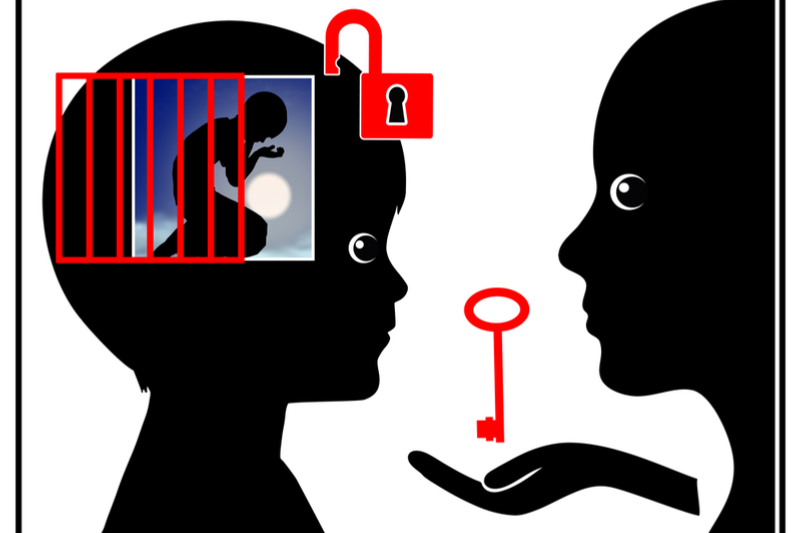
Autistic Spectrum Disorder and Evidence-Based Practices
Written by Jeff Rogers, Posted on
What’s a Parent or a Teacher to do with a Child with ASD?
“If you have seen Rain Man, starring Dustin Hoffman and Tom Cruise,
you probably have an idea of what I am like.”
--Paul McDonnell, autistic’s self-description
Autism Spectrum Disorder 101
Children with Autism Spectrum Disorder (ASD) have a complex disfunction of early brain development that vary in degree across a continuum of difficulties in communication, social interaction and repetitive behaviors. ASD occurs in all racial, ethnic and socioeconomic groups, but nearly five times more in boys than girls. Centers for Disease Control (CDC) estimates 1 in 68 children have ASD. 1
Three general types of autism characterize the range of disorders on the spectrum: Autistic Disorder, Asperger Syndrome, and Pervasive Developmental Disorder.
Autistic Disorder, or classic Autism, involves significant language delays, social and communication challenges, and unusual behaviors and interests. Many with classic autism also have intellectual disabilities as well.
Asperger Syndrome involves milder symptoms of autism, but do not typically have problems with language or intellectual disability. Social challenges and unusual behaviors and interests are often present.
Pervasive Developmental Disorder, or atypical Autism, involves having some characteristics of Autism or Asperger’s, but not all, and often to a lesser degree. Symptoms characteristically only cause problems with social interaction or communication.
Signs of ASD commonly appear before the age of 3, and last throughout a person’s life. Until these signs appear, children with ASD develop quite normally.
- Bobby is 12 months old and still has not responded to his name.
- Cathy is 14 months old and does not point at a bird she is watching flying overhead.
- Jill is 16 months old and has delayed speech and language skills.
- Irvin is 18 months old and cannot play pretend games with toys.
- Sally is 20 months old and avoids eye contact and always wants to be alone.
- Tom is 22 months old and repeats words and phrases over and over.
- Monte is 24 months old and cannot understand others’ expressed feelings.
- Jim is 26 months old and gives answers unrelated to questions asked.
- Alice is 28 months old and is easily upset by even minor changes around her.
- Gary is 30 months old and has an obsessive interest in cats.
- Jack is 32 months old and flaps his hands, rocks his body and spins in circles.
- Same is 34 months old and reacts oddly to sounds, smells, tastes, looks and feels.
The definitive cause of ASD is not known. What is known is that a disproportionate number of children have it, and that that number is growing. Two in 10,000 children were identified with ASD in 1990, but only 2 or so decades later, 1 in 68 were identified as such.2
What is also known is that children with ASD present unique challenges to both parents and schools. So, what’s a parent or a teacher to do to best help a child or student with ASD? What evidence-based practices should they use?
Evidence-Based Practices for Helping Children with ASD
Evidence-Based Practices (EBPs) are divided into two groups, Comprehensive Treatment Models (CTMs) and Focused Intervention Practices (FIPs). CTMs are practices designed to achieve a broad body of learning, particularly to have a developmental impact on the core deficits of ASD. FIPs are practices designed to address a single skill area or individual learning goal with children with ASD.
There are 26 identified EBPs parents and teachers can be trained to do and practice with ASD children:
- Antecedent-Based Intervention
- Cognitive Behavioral Intervention
- Differential Reinforcement
- Discrete Trial Teaching
- Exercise
- Extinction
- Functional Behavior Assessment
- Functional Communication Training
- Modeling
- Naturalistic Intervention
- Parent-Implemented Intervention
- Picture Exchange Communication System
- Pivotal-Response Training
- Prompting
- Reinforcement
- Response Interruption/Redirection
- Scripting
- Self-Management
- Social Narratives
- Social Skills Training
- Structured Play Group
- Task Analysis
- Technology-Aided Instruction
- Time Delay
- Video Modeling
- Visual Support.
The most common of the EBPs are:
- Differential Reinforcement involves the provision of positive and desirable consequences for performing an expected behavior or not doing an identified misbehavior.
- Antecedent-Based Intervention involves the arrangement of events or circumstances that precede an undesired misbehavior such that it will lead to the reduction of the unwanted behavior.
- Prompting involves verbal, gestural, or physical assistance to assist learners in acquiring or engaging in a targeted behavior or skill.
- Video Modeling involves providing a visual model of a targeted unwanted behavior, provided via video recording that allows for mimicking of a desired replacement behavior.
- Time Delay involves giving a learner extra time to respond to a question before providing a prompt to assist the desired response.
- Social Narratives involves using stories of actual social situations, highlighting relevant cues for appropriate responding.2
Other Helps for Parents and Teachers
Indiana University, Teaching Tips for Children and Adults with Autism, iidc.indiana.edu.
University of Kansas, Autism Support for Parents and Teachers, educationonline.ku.edu.
Autism Awareness Centre Inc., Back to School Tips for Parents and Teachers,
autismawarenesscentre.com.
Autism Speaks, Five Ways Teachers Can Support Students with Autism, autismspeaks.org.
Grafton Integrated Health Network, Ten Things Parents of a Child with Autism Wish Teachers Knew,
grafton.org.
Resource Guide for Parents of Children with Autism, princeedwardisland.ca.
1
Autism Support of West Shore, “a place where everyone fits,” Autism Society of America, 2014.
2
Evidence-Based Practices for Children, Youth, and Young Adults with Autism Spectrum Disorder,
Wong and Odom, 2014.
